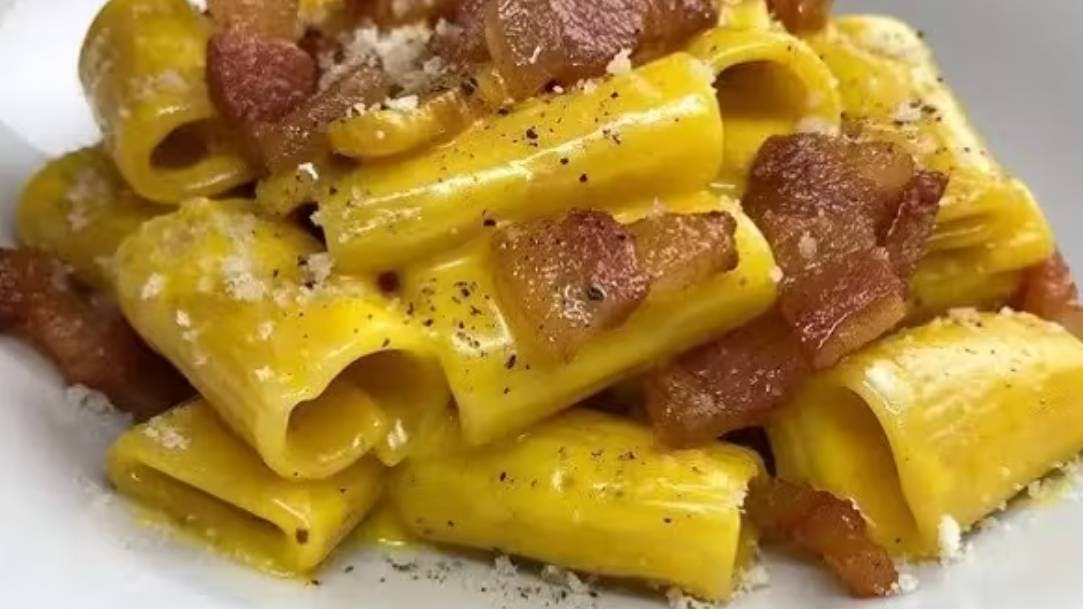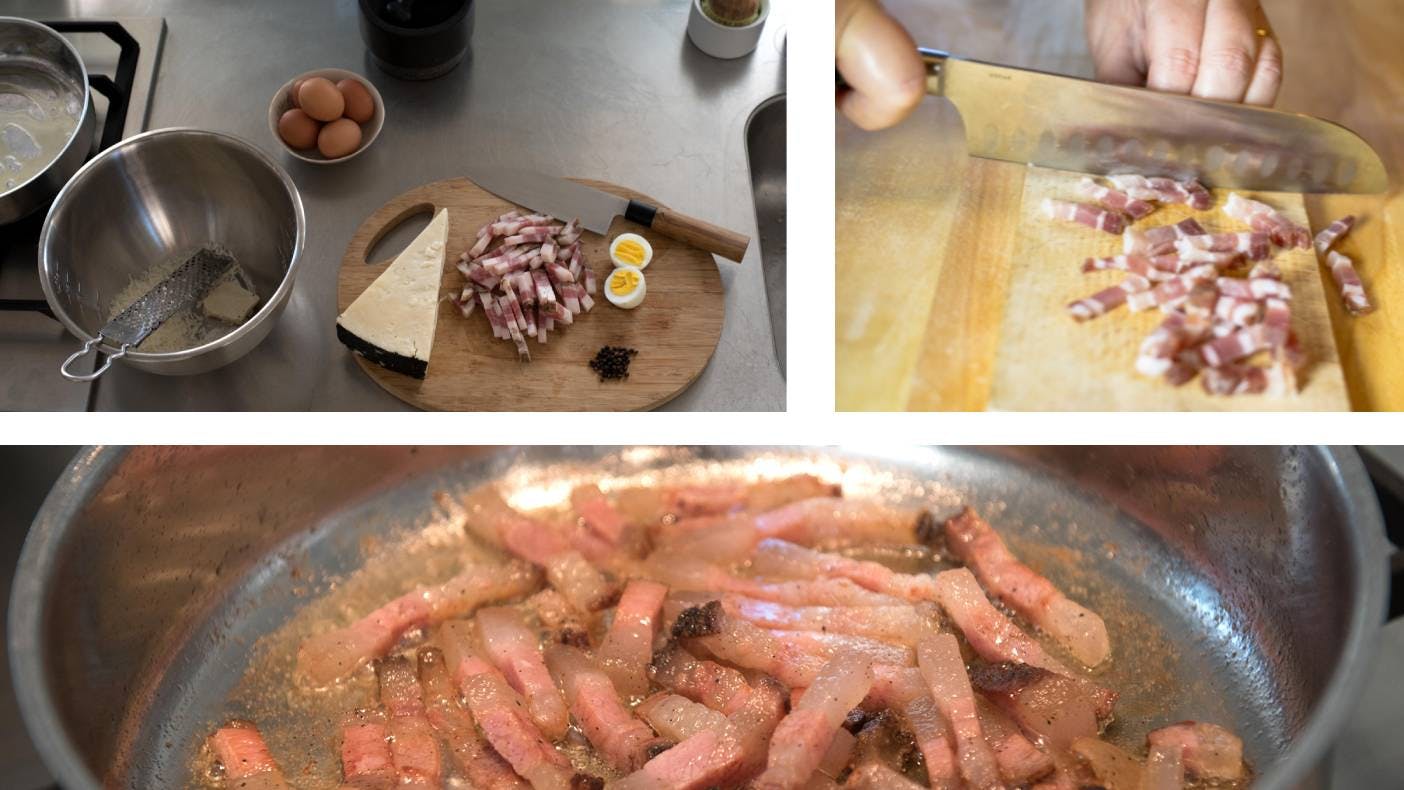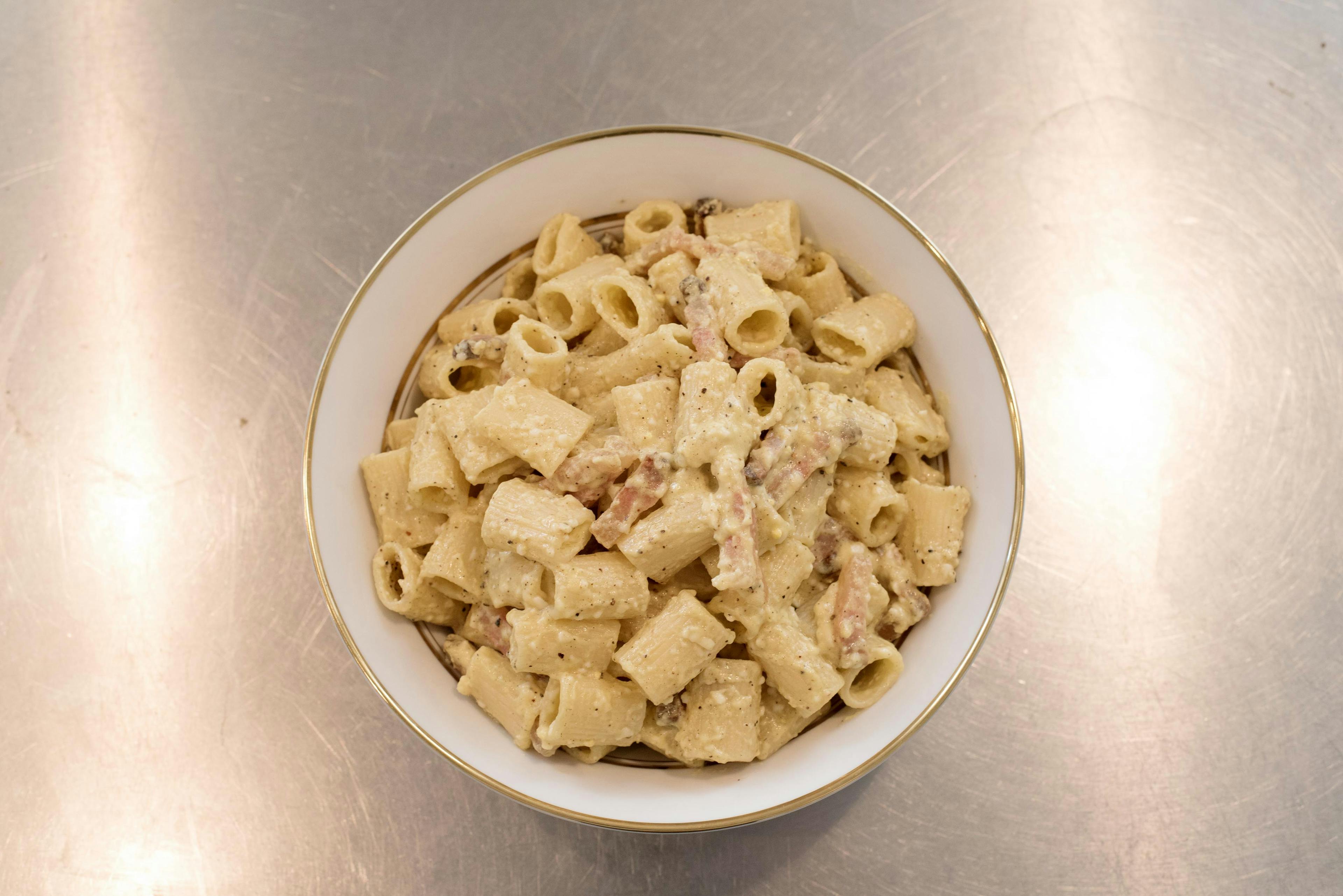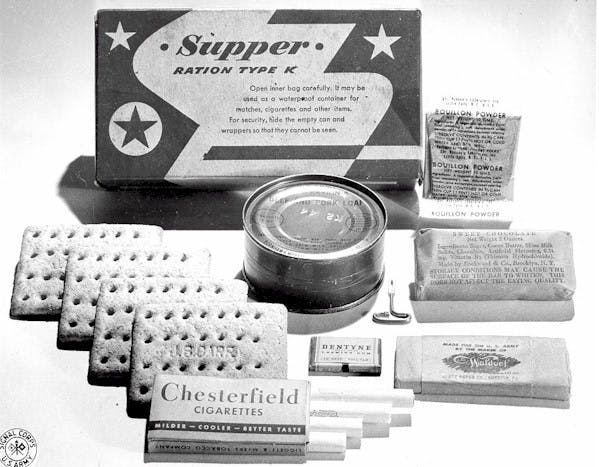

Carbonara is the epitome of Roman cuisine (although its origins aren't exactly Roman, as you'll read below) and is one of the most popular dishes worldwide. And if it is, it's for a good reason...
The pasta is enveloped in an irresistible creamy sauce that contrasts with the pungent notes of black pepper and Pecorino cheese, along with the crispiness of the toasted guanciale. A true paradise for the palate!

The recipe of Carbonara pasta
This pasta requires very few ingredients (remember: garlic, cream, and onion are not allowed!), but a certain technical skill: when draining the pasta, it's essential to immediately transfer it to the pan with the sauce without draining too much water. The heat of the just-cooked pasta, along with the starch-rich water and the fat from the cheese, combine to create that mythical "creamy" texture, the sauce that makes Carbonara so appetizing.
The recipe may have slight variations from family to family; the one we present today is from our Cesarina Ofelia.

Pasta Carbonara
Prepare a classic Roman dish at home
Ingredients
- 350 g mezze maniche pasta
- 150 g guanciale, sliced 1 cm thick
- 4 fresh eggs (1 yolk per person) + 1 whole egg
- 100 g Pecorino Romano cheese
- 50 g Parmesan cheese
- Black pepper
- Salt
- A few tablespoons of pasta cooking water
Method
- First, cut the guanciale into strips and place it in a pan.
- Put a large pot of water for the pasta on the stove.
- Meanwhile, heat the guanciale over low heat in the pan. The guanciale should not become too hard but should soften slowly, releasing all the "fat" that will be used to cream the pasta.
- Meanwhile, the water will come to a boil, and you can cook the pasta.
- It's time for the egg yolk cream to achieve a perfect Carbonara. Mix the egg yolks and one whole egg with most of the Pecorino and Parmesan cheese (leave 1 tablespoon for seasoning) and plenty of pepper, preferably freshly ground.
- Add a few tablespoons of pasta cooking water to prevent the "omelet effect." The cream should be soft but at the same time dense and velvety. The color should be intense.
- Remove the guanciale from the pan and set it aside for garnish, leaving a few pieces in the pan.
- Drain the pasta very al dente directly into the hot guanciale pan (setting aside some of the pasta cooking water).
- Add a grind of pepper and let the pasta start to release some of its starch, beginning to form a veil of 'cream' made only of pasta starch aided by the cooking water and guanciale fat.
- Add the egg cream to the pasta and guanciale in the pan, also adding 2-3 tablespoons of pasta cooking water.
- Immediately remove from the heat and mix vigorously to prevent the egg from curdling, lowering the temperature and creating a homogeneous amalgam.
- Add the crispy guanciale and plate up, dusting with a little Pecorino, a little pepper, and strips of guanciale.
Enjoy your authentic Roman Carbonara experience!
Our experiences where pasta takes center stage
Craving Carbonara or eager to master the art of pasta-making? Discover our best fresh pasta cooking classes!
In search of the origins of Carbonara pasta
As often happens with traditional dishes, the story of Carbonara is shrouded in a certain aura of mystery. Certainly, the recipe isn't very ancient, having made its appearance in the post-World War II era, and its origins are partly Neapolitan, partly Abruzzese, and partly… American!
It seems that in the province of L'Aquila, during the Second World War, charcoal makers prepared a pasta dish called "cacio e ova" (cheese and eggs): hence, the addition of guanciale (cured pork cheek) was almost natural for the region where the recipe was made, and perhaps even bacon, imported from the United States.
According to others, however, Carbonara originated in Naples, also during the years of the Second World War. American soldiers loved "street food," and among the things they consumed were spaghetti seasoned with cheese and pepper. It is said that an American soldier, finding the flavor of those spaghetti too bland, added the "K ration", which consisted of powdered eggs, bacon, and liquid cream.

Many of you are probably shuddering, but perhaps it was precisely that "daring" soldier who inadvertently created the progenitor recipe of Carbonara. Then, starting from that unorthodox and very American recipe, the Neapolitans worked on the ingredients, and from there, the Carbonara that we all know was born.
The first "official" recipe of this famous dish was then published in August 1954 in the magazine "La Cucina Italiana."